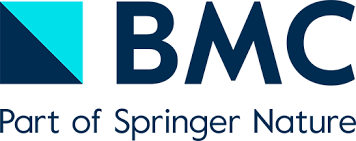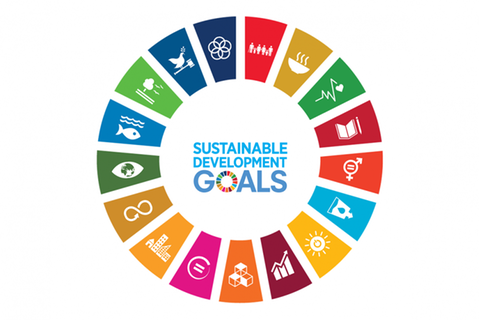A Week in the Life of a Journals Publisher
Published in Healthcare & Nursing, Astronomy, and Social Sciences

TL;DR: The workload of a Publisher is highly varied, combining administrative responsibilities, strategic development, and close collaboration with external Editors-in-Chief (EiCs) to ensure strong journal performance. Despite the demanding and unpredictable nature of the role, the autonomy to manage tasks and a supportive team make the work rewarding and intellectually stimulating.
 Based in London, I started working at Springer Nature in 2021 as a Publishing Assistant in the BMC group and am now a Publisher. I've managed a portfolio of journals for almost two and a half years now, mostly reproductive and women's health, all Open Access, and a mix of basic/clinical and public health titles. Within our department, Editorial Boards are entirely external; we contract Editors-in-Chief (EiCs) who oversee the editorial content and recruit voluntary teams of expert researchers as Editors to process and handle peer review for our journals. As such, the relationship between the Publishing Office and Editorial Board is vitally important to ensure our journals continue developing. A typical week includes many different tasks: email admin, editor recruitment, managing our editorial pipeline, responding to editor and author queries, contract negotiations with external parties and more. As Publishers, we are largely autonomous and are responsible for our own portfolios, allowing us the freedom to order our tasks and plan our own workload with independence.
Based in London, I started working at Springer Nature in 2021 as a Publishing Assistant in the BMC group and am now a Publisher. I've managed a portfolio of journals for almost two and a half years now, mostly reproductive and women's health, all Open Access, and a mix of basic/clinical and public health titles. Within our department, Editorial Boards are entirely external; we contract Editors-in-Chief (EiCs) who oversee the editorial content and recruit voluntary teams of expert researchers as Editors to process and handle peer review for our journals. As such, the relationship between the Publishing Office and Editorial Board is vitally important to ensure our journals continue developing. A typical week includes many different tasks: email admin, editor recruitment, managing our editorial pipeline, responding to editor and author queries, contract negotiations with external parties and more. As Publishers, we are largely autonomous and are responsible for our own portfolios, allowing us the freedom to order our tasks and plan our own workload with independence.
Monday - Admin, Recruitment and KPIs
A typical week will start with me needing to action my inbox again. Our dedicated Editors will often work through weekends to work on manuscripts leaving us with busy inboxes on a Monday morning. Little queries can be dealt with as and when. Larger issues, prioritised based on importance and need, can be slotted in at some point during the week. Some of the emails that come in will be Editor applications. Our Editorial Boards are always recruiting to gain new expertise, talent and diversity, and respond to growing submissions. I'll triage applicants, forwarding promising candidates to the EiCs for approval, and organise onboarding onto Snapp, our manuscript management system, and other internal systems. Early in the month, I'll work on completing a monthly report to track our KPIs - submissions, acceptances, publications, turnaround times - and assess performance for each journal to determine if there are any issues that need resolving to meet targets.
Tuesday - Research Integrity, Sustainable Development Goals and Editor meetings
 Tuesday might involve some work on Research Integrity cases. Depending on the portfolio, some journals see more ethics issues than others. I have a couple of journals that publish a lot of research using Western blots and histology, which are (unfortunately) ripe opportunities for image manipulation. At any one time, I generally have around 7 ethics cases open and keeping track of everything can be a major task. I'll liaise with authors to request data and explanations for alleged issues, discuss cases with EiCs, and approach experts to gain post-publication review. I also chair an SDG3 working group and will work with colleagues organising campaigns for various awareness days scattered throughout the year, providing assistance and advice on workflows to ensure we deliver our campaigns on time. I might also have an EiC meeting in the afternoon, the frequency of which depends on the journal. We'll discuss any issues that have cropped up, any actions we need to take to resolve problems, and then we'll spend some time working on how we can best develop the journal - even if our exact vision and strategy for the journals may not align perfectly, we share a common goal in making our journals flourish.
Tuesday might involve some work on Research Integrity cases. Depending on the portfolio, some journals see more ethics issues than others. I have a couple of journals that publish a lot of research using Western blots and histology, which are (unfortunately) ripe opportunities for image manipulation. At any one time, I generally have around 7 ethics cases open and keeping track of everything can be a major task. I'll liaise with authors to request data and explanations for alleged issues, discuss cases with EiCs, and approach experts to gain post-publication review. I also chair an SDG3 working group and will work with colleagues organising campaigns for various awareness days scattered throughout the year, providing assistance and advice on workflows to ensure we deliver our campaigns on time. I might also have an EiC meeting in the afternoon, the frequency of which depends on the journal. We'll discuss any issues that have cropped up, any actions we need to take to resolve problems, and then we'll spend some time working on how we can best develop the journal - even if our exact vision and strategy for the journals may not align perfectly, we share a common goal in making our journals flourish.
Wednesday - Pipeline management, new launches and STEM mentoring
Wednesday morning sees the delivery of the weekly Snapp reports and I'll spend some time working on pipeline management. Most of our journals don't have dedicated Managing Editors and so this role falls to us Publishers, as well as assisting Editors who come to us with questions and queries. I might also find myself working on a proposal for a new launch journal as we're always looking for opportunities to develop our portfolios and move into areas that aren't currently covered in the Publishing landscape. This will involve a lot of data analysis, looking at market strength, funding, and competitors in particular. Select Wednesday afternoons between September and March will also see me head to a local secondary school near the London office for a mentoring scheme to work with female students interested in STEM careers. I've been co-running this with a colleague for a couple of years now and whilst we have just six sessions per academic year, the planning extends far beyond these nine hours. Late November each year sees the students coming to the office for a visit and a session on preparing for interviews with the promise of juice, biscuits and discounted halloween chocolate!
Thursday - Team meetings, Editorial Board meetings and blog commissioning
My sub-team is currently based exclusively in London and so we meet in person every month to discuss highlights and hurdles in our work, brainstorm solutions, share personal development opportunities and more. The afternoon might see me hosting an Editorial Board meeting. These meetings, usually held annually, provide an opportunity for us to meet virtually with our wider Board and discuss journal metrics as well as development initiatives. I've found our Editors are often very engaged and eager to suggest ideas to improve, particularly on potential collections we can launch to solicit research on hot topics and there's nothing better than receiving ideas from experts in the field. The rest of the day might then be spent commissioning some blogs for the Research Communities such as Q&As with my Editors, which are a great way for both our Editorial Boards and the wider scientific community to get to know our Editors and their research.
Friday - Journal development (and looking forward to the weekend!)
Friday tends to be a slower day and I can spend time working on larger tasks such as Journal Development Plans (JDPs). Later in the year, we're required to complete JDPs for each of our journals to influence what tasks and activities we'll carry out in the coming year to improve the journal. I'll take some time to assess current performance, note weaknesses that need to be addressed, and formulate actions to take forward into the new year. I'll also evaluate how successful I've been in completing previous year plans. Finally, I'll make a note of any actions that need carrying over into the next week and start to enjoy the weekend!
This is by no means an exhaustive list of tasks we complete each week. Between every larger task is a whole host of emails that need following up on and between every small email and its accompanying action is the sudden appearance of a broader task that may need weeks or even months to complete. Our workload is varied and ever-shifting but the independence of our work means that we can move things around and prioritise where needed. The good thing about the role is that there's no knowledge ceiling; every week I receive a query on something I haven't come across before and it's great to have such a supportive and diverse team around me to help out as well as such dedicated Editorial Boards that truly make our journals shine.





Please sign in or register for FREE
If you are a registered user on Research Communities by Springer Nature, please sign in